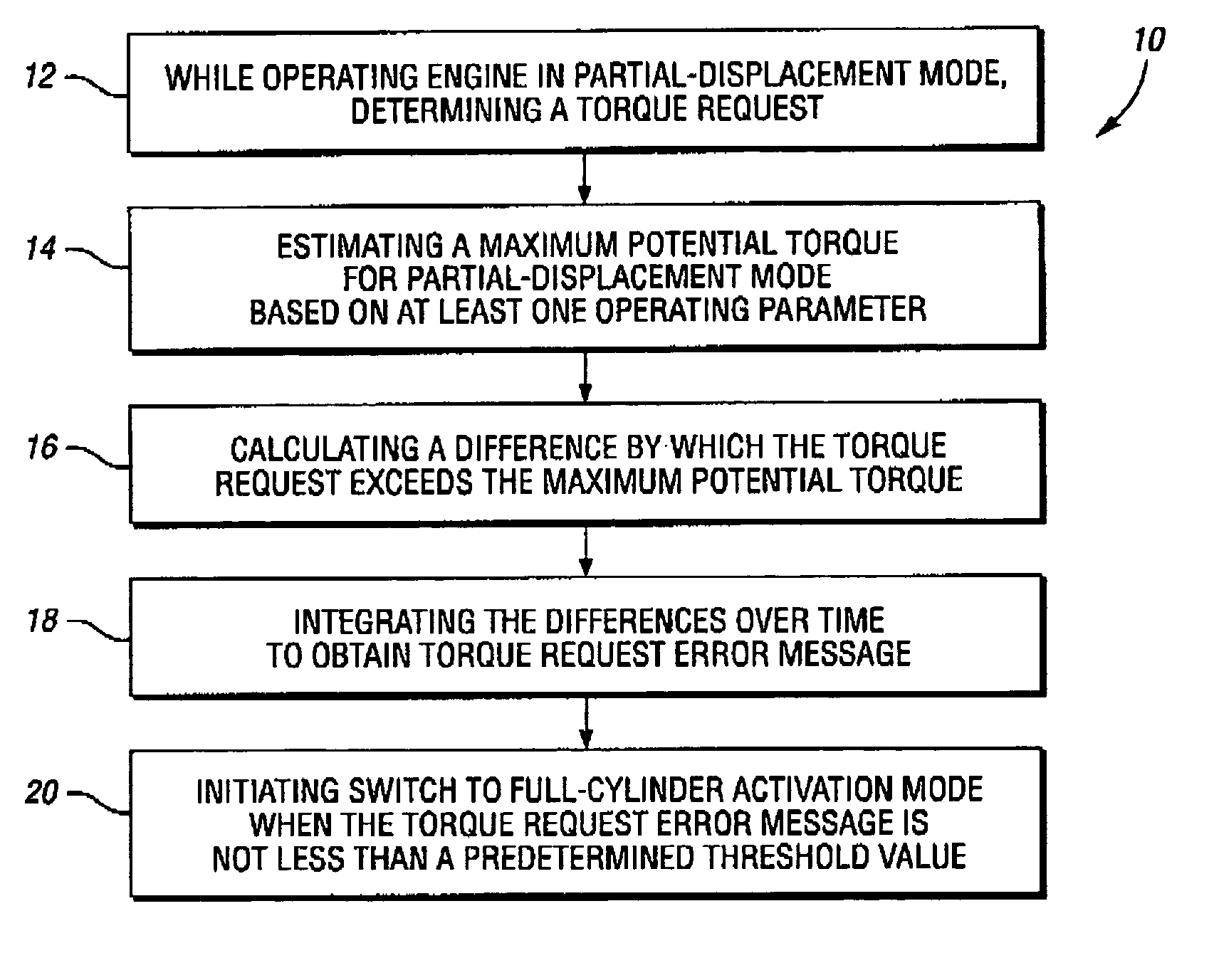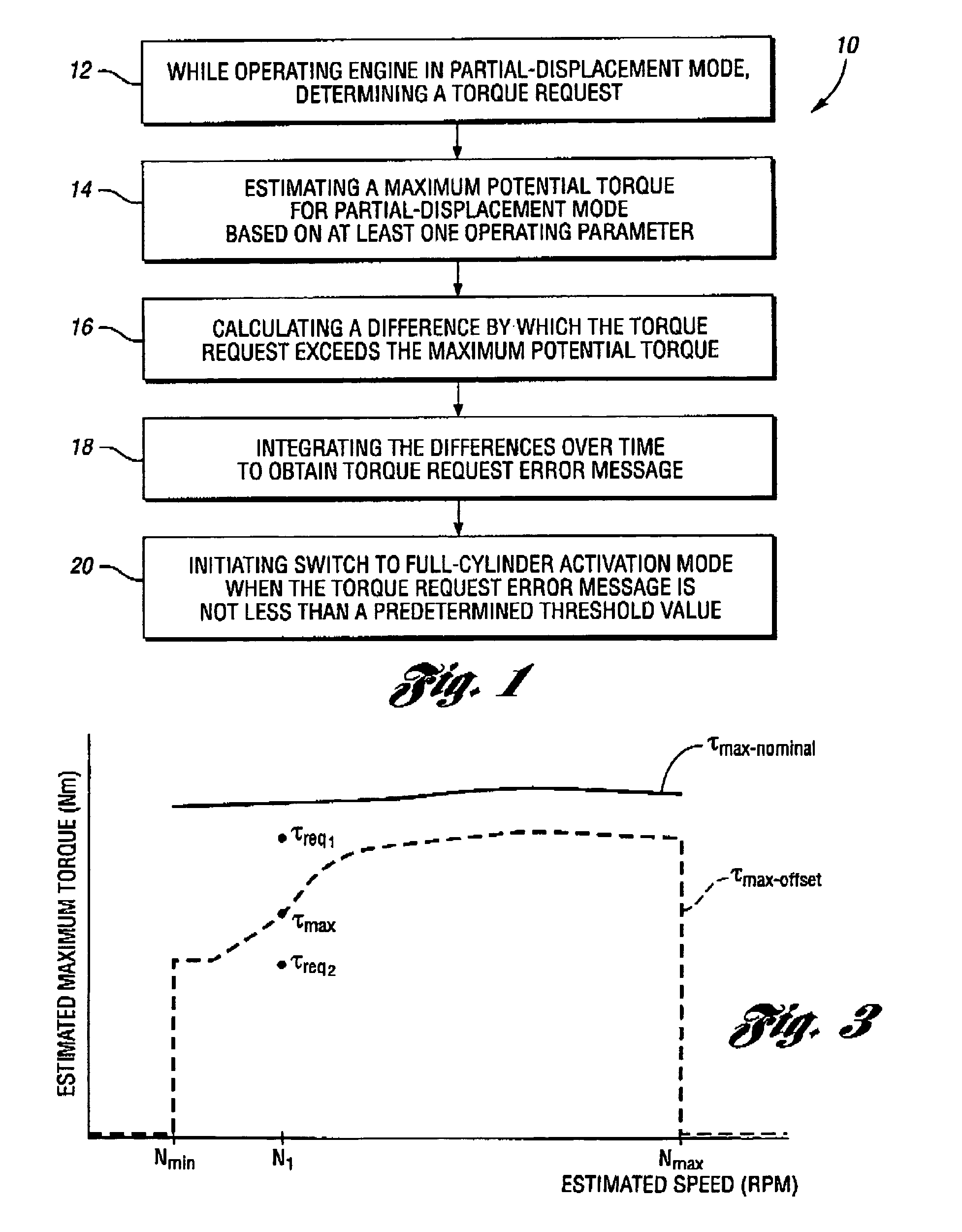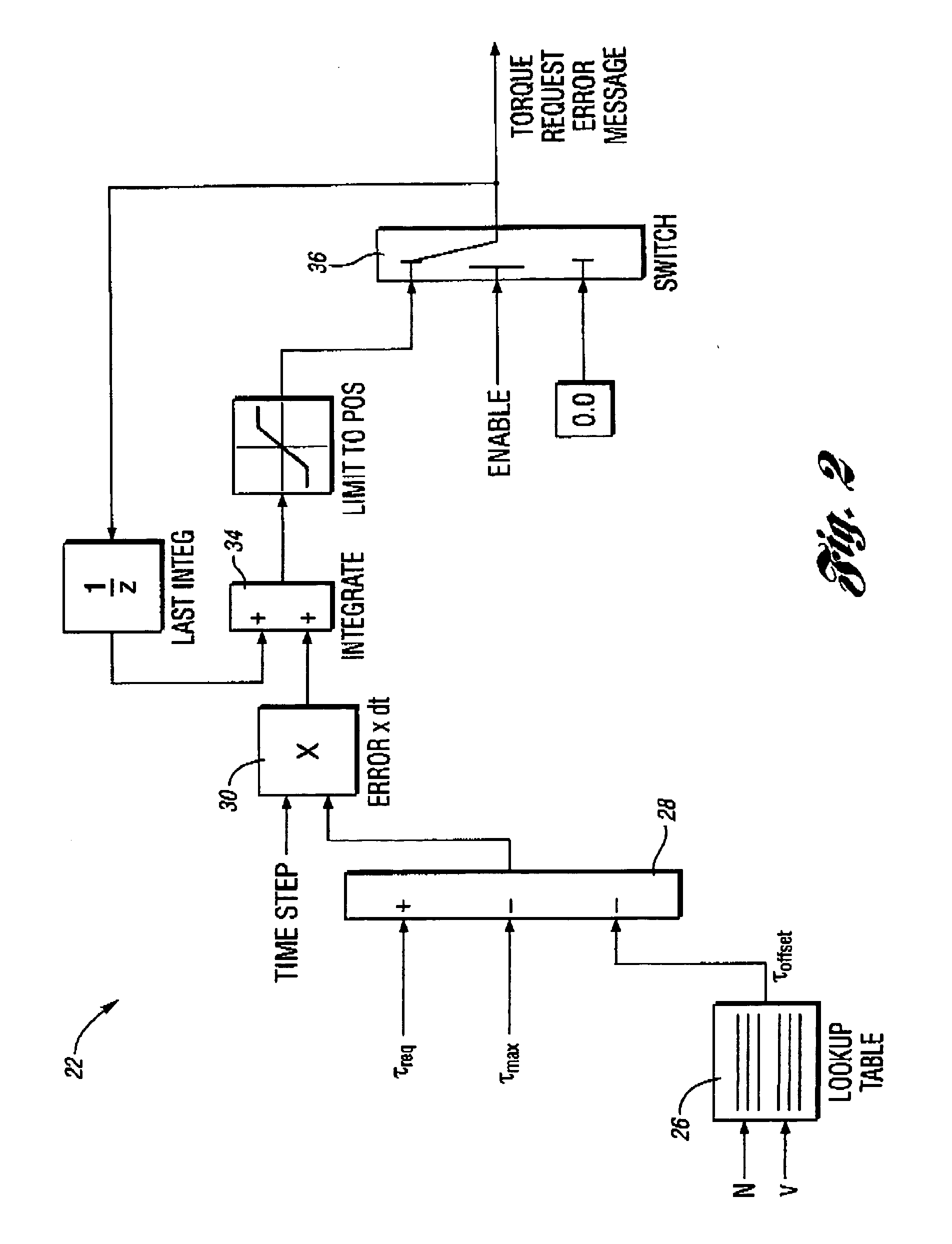Method and code for controlling reactivation of deactivatable cylinder using torque error integration
- Summary
- Abstract
- Description
- Claims
- Application Information
AI Technical Summary
Benefits of technology
Problems solved by technology
Method used
Image
Examples
Embodiment Construction
[0013]A method 10 for controlling a reactivation of a given deactivated cylinder of a multi-displacement internal combustion engine is generally illustrated in FIG. 1. While the invention contemplates any suitable hydraulic and / or electromechanical systems for deactivating the given cylinder, including deactivatable valve train components, a constructed embodiment features an eight-cylinder engine in which four cylinders are selectively deactivated through use of deactivatable valve lifters as disclosed in U.S. patent publication no. US 2004 / 0244751 A1, the teachings of which are hereby incorporated by reference.
[0014]As seen in FIG. 1, the method 10 generally includes determining, at block 12, a torque request while the engine is operating in a partial-displacement or cylinder-deactivation mode. Typically, the torque request is determined by an engine or powertrain controller based, for example, upon a detected position of the vehicle's accelerator pedal and a current engine speed,...
PUM
 Login to View More
Login to View More Abstract
Description
Claims
Application Information
 Login to View More
Login to View More - R&D
- Intellectual Property
- Life Sciences
- Materials
- Tech Scout
- Unparalleled Data Quality
- Higher Quality Content
- 60% Fewer Hallucinations
Browse by: Latest US Patents, China's latest patents, Technical Efficacy Thesaurus, Application Domain, Technology Topic, Popular Technical Reports.
© 2025 PatSnap. All rights reserved.Legal|Privacy policy|Modern Slavery Act Transparency Statement|Sitemap|About US| Contact US: help@patsnap.com



